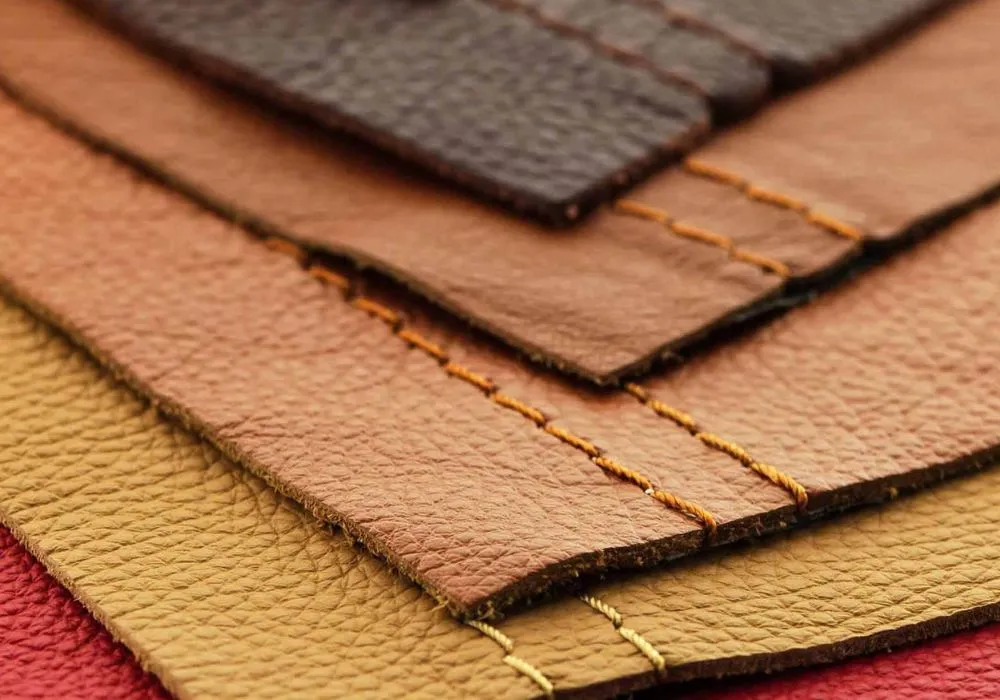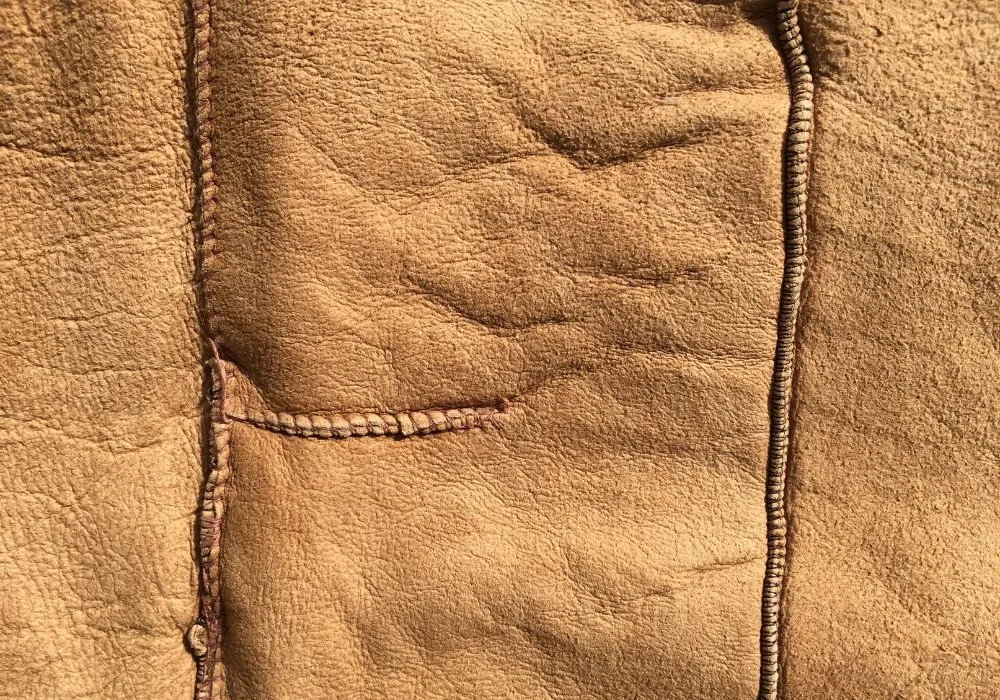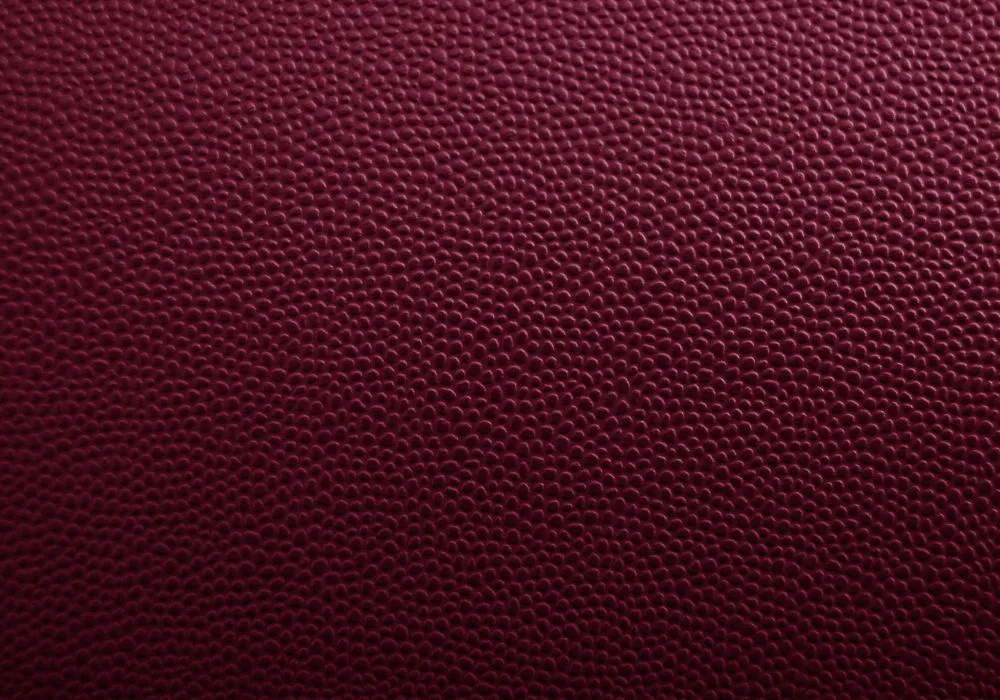Have you ever stumbled upon a product that boasts the rich appearance and luxurious feel of genuine leather yet flaunts an unbelievably attractive price? Odds are, you’ve encountered an item fashioned from bonded leather.
As discerning consumers, we incessantly pursue quality, endurance, and genuineness in the investments we make, particularly when it comes to leather goods. However, the market flooded with an array of leather variations renders distinguishing product quality and longevity a daunting challenge.
Within this all-encompassing guide, we’ll unveil everything you need to know about bonded leather. We’ll explore its composition, intricate manufacturing procedures, diverse applications, merits, demerits, distinctive attributes, and beyond—an endeavor crafted to equip you with the insight needed to make an informed choice in your purchase expedition.
What is Bonded Leather?

Bonded leather, also known as composition, blended, or reconstituted leather, is a material fabricated from leather scraps and fibers using different binding agents like PU, latex, or acrylic. It’s typically created in varying thicknesses from 0.10 to 6 millimeters and comes in either rolls or sheets. As a fabric made using remnants and waste products from the tanning industry, bonded leather’s homogenous texture resembles genuine leather both visually and tactilely. It offers an economical alternative and an effective way of utilizing by-products for higher value creation while promoting almost zero waste.
How Bonded Leather is Made
The process of creating bonded leather is actually quite an intricate process divided into key phases – shredding, melding together various elements, extrusion (molding it under pressure), introducing colorations or tints through dye means, and then moving onto stamping-plus-embossment procedures. Last but not least comes the finishing touches to wrap up this fascinating procedure! So, let’s peel back these layers one by one to bring you closer insights into how all the magic happens behind the scenes with bonded leather production.
Shredding
The process starts with gathering leather scraps and fibers from various origins like tanneries or manufacturing units, which could be leftover material resulting from authentic leather product creation. This gathered leather undergoes cleansing and classification to eliminate impurities. Once categorized, it’s then transformed into small equivalent fragments suitable for future production stages via specialized machinery.
Mixing
After the leather is shredded (torn into pieces), it’s combined with different substances to form a bonded leather composite. The usual constituents used are polyurethane, latex and various bonding elements. These ingredients are uniformly combined in precise ratios to create an enduring and uniform end product. The blending procedure typically happens in sizable industrial stirring equipment or blending machines.
Extrusion
Post-mixing, the yielded bonded leather mixture is transformed into sheets through extrusion. Extrusion implies forcing the blended material via a die to create continuous layers of uniform thickness. The extrusion procedure plays an integral role in maintaining uniform consistency and aesthetics across the entirety of this type of synthetic leather.
Dyeing/Coloring
After the formation of these sheets, color or dye is infused into the bonded leather’s surface to achieve its intended appearance – the whole coloring procedure is meticulously monitored for uniformity in penetration and distribution of dye. This process paves the way for various shades and finishes, yielding an extensive portfolio of aesthetically pleasing bonded leather items.
Stamping/Embossing
Once the bonded leather is dyed, a surface texture can be added that mimics the natural grain of authentic leather. This technique may also add visually pleasing designs. While stamping on traditional leather often hides imperfections, applying it to bonded leather mainly aims to add depth to its finish.
Finishing
Once the embossing or stamping of bonded leather is complete, it typically undergoes a finishing process with synthetic surface shields, which gives the material its glossy look. Typically, these finishes consist of polymers known for their water and scratch-resistance attributes while also safeguarding the underlying fabric. To mimic authentic leather’s signature scent on this artificial version, fragrances tailored towards that end are introduced during polishing.
Advantages and Disadvantages of Bonded Leather
Every product has unique merits and demerits, and bonded leather is no exception. Below, we delve into its advantages and drawbacks.

Pros of Bonded Leather
- Affordability: Remarkably less expensive than numerous leather variants.
- Diverse Palette: Available in an extensive spectrum of colors.
- Texture Versatility: Offers diverse surface textures, allowing for multifaceted appearances.
- Versatile Utility: Applicable across various leather goods.
- Size Flexibility: Manufacturable in expansive sheets, particularly advantageous for furniture applications.
- Authentic Resemblance: Convincingly mirrors the aesthetics and scent of natural leather.
- Environmental Edge: Compared to certain alternatives, it is more eco-friendly.
- Ease of Maintenance: Simple to clean, making it a pragmatic choice for items prone to spills or stains.
Cons of Bonded Leather
- Prone to Cracking: Tends to develop cracks within a few years.
- Durability Issue: Less enduring compared to natural leather.
- Aging Woes: Deteriorates with age, in contrast to certain natural leathers that improve over time.
- Lack of Flexibility: Exhibits limited flexibility, impacting certain applications.
- It is harder to repair tears and scratches than natural leather.
- Bonded leather is prone to color fading when exposed to sunlight.
Common Uses of Bonded Leather
Despite not possessing the durability of genuine leather, bonded leather compensates with respectable toughness, cost-effectiveness, and striking resemblance to real leather. Consequently, it’s gaining appeal in industries where aesthetics play a huge role. Let’s explore some predominant applications of bonded leather fabric below:
Furniture and Upholstery
Bonded leather is a common material furniture makers use for crafting comfortable seating, such as chairs and sofas. It imparts an elegant yet trendy vibe to items like couches, armchairs, and ottomans. Consequently, the use of this fabric leads to more affordable pricing than pieces made from genuine leather.
Belts
Using bonded leather for crafting belts is prevalent due to its flexibility and toughness. It provides a neat, glossy look comparable to genuine leather alternatives on the market but at more economical prices.
Book Covers
Thanks to its ability to recreate the feel of genuine leather, publishers, and bookbinders frequently harness bonded leather in creating book covers. The sleek finish it imparts gives books an eye-catching appeal that readers find enticing.
Leather Jackets
While bonded leather may not possess the robustness of authentic leather, it is occasionally utilized in making leather jackets. Due to its similar appearance and texture to real leather fabrics, it provides a more economical option for those seeking the fashion appeal offered by a leather jacket without investing significant sums.
Bags
Bonded leather is also used to create bags, such as totes, backpacks, wallets, and briefcases. Its versatility allows designers to craft superior-quality bags without breaking the bank.
Floor Panels and Wall Panels
Sometimes, interior designers opt for bonded leather when creating floor and wall panels. Implementing this material introduces an element of sophistication to the space, enhancing its aesthetics considerably. The plush sensation beneath one’s foot or seamless blend with walls brought about by bonded leather invariably renders any room more presentable and fashionable.
Differences Between Bonded Leather and Real Leather

Bonded leather and real leather have distinct differences in material composition, quality, lifespan, and cost, as detailed below:
Material Composition
As highlighted earlier, bonded leather is crafted from leftover leather scraps and fibers. These remnants undergo processing, adhered together with polyurethane or latex, creating a composite material. Real leather, often termed “genuine” or “full-grain,” comes from animal hides, typically cowhide, and undergoes various tanning processes to create durable, natural leather. Because it’s a product of animal skin, it is sturdier and more natural in composition.
Quality and Lifespan
Bonded leather does a commendable job of resembling the look of authentic leather. Yet, in terms of endurance and strength, it trails far behind its genuine counterpart. With frequent use over prolonged periods, conditions like peeling and cracking can surface on bonded leather. Contrastingly, these impairments may take much longer to appear, if at all, on real leather. Real leather is known to be more resistant to wear and tear. It can develop a rich patina over time and maintain its quality and appearance if properly maintained.
Cost Comparison
While bonded leather products usually come with a more pocket-friendly price due to their composition, making them appealing for those on tighter budgets, authentic leather typically carries a heftier cost. This is attributed to both the superior quality of its material and the involved production techniques. Still, the lasting resilience and lifespan of genuine leather often make up for its steeper costs.
Case Study Of Bonded Leather Vs Real Leather
Leather Belts – Bonded Vs Real Leather
Distinguishing a belt made of bonded leather from an authentic one while in-store can be challenging. However, with usage, the disparities clearly surface. A real leather belt may prove durable for more than two decades without snapping due to everyday use. A tightly fastened belt composed of bonded leather could potentially tear within months – though sometimes enduring slightly longer before breakdowns around its buckle region become visible. Even if the bonded leather doesn’t break completely, it has a high chance of cracking and starts looking bad quicker than expected.
Real Vs Bonded Leather In Furniture
Authentic leather sofas adapt to your body temperature, regardless of the external conditions – warm or chilly. Bonded leather fails at this function – it feels warmer in summer and cooler during winter, contrary to genuine leather’s trait. Furthermore, with each passing year, real leather enhances its charm and remains durable for a considerable duration. Unfortunately, bonded leathers lack this quality, too – they degrade quickly without any improvement in their aged appearance.
Leather Book Covers – Bonded Leather Vs Real Leather
Commonly, bonded leather is used to make covers for books such as Bibles, journals, and expensive volumes. Prior to the advent of bonded leather, book covers were made from authentic leather, which had a longer life span with proper maintenance. In contrast, cover books fashioned using bonded leather are not as enduring due to their material composition.
Leather Jackets – Bonded Vs Real Leather
One of the notable reasons for wearing riding jackets is for protection in accidents, so the jacket must be strong enough to guard against impact. Authentic leather biking jackets surpass bonded leather ones considerably in terms of durability. Moreover, the breathability aspect is significantly lower with bonded leather-made jackets when pitted against genuine leather ones. You can feel the difference, especially under heat or high humidity conditions.
How to Identify and Verify Bonded Leather
It can be challenging to tell the difference between real leather and bonded leather due to their similarities. However, with keen observation coupled with some practical methods we will reveal below, you can figure out the differences between the two. Let’s explore a few of these methods:

Smell Test
Genuine leather derives its essence from the hides of animals, bearing a distinctive aroma that resonates with nature. Described often as earthy or reminiscent of wooded landscapes, its fragrance, akin to oak, emanates from its origins—real animal skin. Even after processing, you will still feel the original smell of the leather.
Conversely, bonded leather emits a potent synthetic odor, redolent of adhesive, and inexpensive plastics. This smell comes from the fact that the top material is glued to the synthetic background and the strong chemicals used to dye and treat the material in order to make it look more like real leather.
Inspect The Texture
Real leather is natural, so when you touch it, it won’t feel completely smooth. Pressing your finger into real leather will stretch and form wrinkles, a bit like skin. This happens a lot with full-grain leather and sometimes with top-grain.
When you touch bonded leather, it feels cold and smooth. If you press your finger into it, it won’t act like skin. Instead of stretching or wrinkling, it goes down under your finger but keeps its shape.
The Price Tag
The price tag on leather goods often reflects their quality. While cheaper options generally raise suspicions about authenticity or signal lower-grade materials, an exorbitant price doesn’t guarantee real leather.
Bonded leather’s affordability stems from its composition of synthetic elements and remnants of leather. On the other hand, real leather commands a higher price due to its superior quality and longevity.
Flame Test
When determining the authenticity of leather, especially in established products, employing a flame test can be insightful. However, we highly advise against using this method on recently acquired goods.
Conducting the test in a discreet spot, such as the underside of a furniture piece, is paramount. This precautionary measure is crucial due to potential consequential damage, particularly when dealing with artificial leather.
The procedure involves gently applying a flame to the fabric for 5 to 10 seconds. If the material ignites or emits a chemical odor, it is indicative of synthetic leather. Conversely, if the substance merely chars and emits an aroma akin to burnt hair, it indicates authentic leather.
Water Test
Simply add a few drops of water onto the fabric – genuine leather will readily absorb the water within just a few seconds – but if the water pools on top and doesn’t penetrate the surface, it’s likely a bonded leather.
Read The Label
Keep a keen eye for indicators like “synthetic,” “polyester,” “leatherette,” or “vegan leather”; these typically hint at the product being either bonded or faux leather. Real leather, on the other hand, boldly declares its authenticity, often denoted by phrases such as “100% leather,” “full-grain leather,” “top grain leather,” or simply “genuine leather.
Bonded Leather Care & Maintenance
It’s advised to employ a mild cleaning method for preserving the immaculate surface of bonded leather, preferably using a damp cloth. The chosen clean-up tool mustn’t have loose strands or lint that may shift onto its surface. A microfiber piece could be an effective choice here. Also, checking obscure parts first can help avoid any potential color leakage affecting things like couches, sofas, bags, or purses.
A soft-bristled brush might do the trick if you discover your item needs extra attention. Immerse it lightly in water, let it mix well with its bristles, and softly sweep away grime from the leather piece. Following this, use a moist cloth to clear off the remaining dirt before letting it dry thoroughly prior to usage or storage. Furthermore, ensure bonded leather is stored in an environment where coolness and dryness prevail. Avoid exposure to direct sunlight as discoloration may occur – also, remember that its protective layer could suffer damage.
Final Thoughts
Opting for bonded-leather might look enticing, and buying an item made from it isn’t necessarily bad. Nevertheless, understanding its benefits and drawbacks is imperative before finalizing a purchase. Although bonded leather’s cost-effectiveness and genuine-like appearance are inviting features, its longevity can’t quite match up to authentic leather’s endurance.
Again, if you own one or two items made of bonded leather, it’s important to know how to use and maintain them properly. Even though it doesn’t reach the standards of real leather, you can still prolong its lifespan and functionality with adequate maintenance.
In essence, your choice of leather goods should hinge on what features appeal most to you – whether budget-friendly options or a bias towards long-lasting quality.
Discover Quality and Style with HOP LOK Leather: Shop Your Desired Leather Products Today!
At Hop Lok Leather, we’ve been creating spectacular belts for over twenty years, reflecting an unbeaten fusion of talent and devotion. Our proficiency extends to diverse accessory groups – from belts to SLGs, alongside meticulously designed bags for men, women, and children alike. These masterpieces are no mere products – they stand as lasting tributes to craftsmanship designed to withstand the passage of time and constantly changing fashion trends.
Our team is made up of craftspeople skilled in an array of sophisticated methods. Their mastery covers everything from the nuanced craft of leather finishings to keen tasks such as edge coloring, staining, stamping, and laser trimming, culminating in meticulously executed needlework that breathes life into every piece we make.




